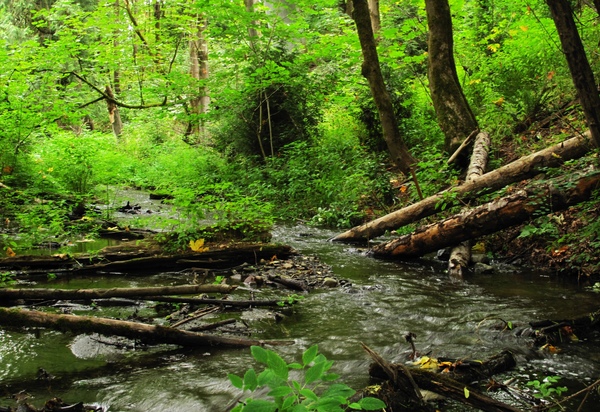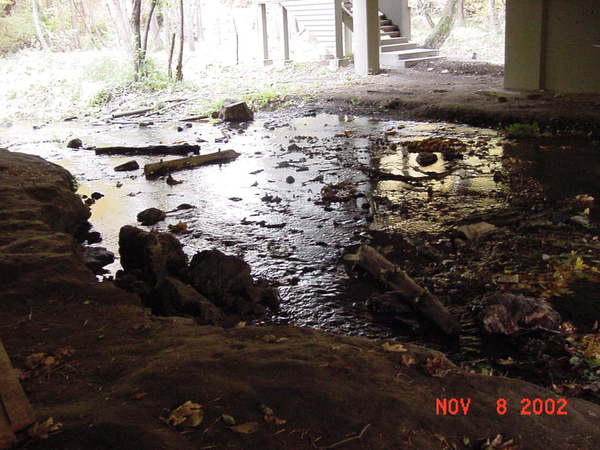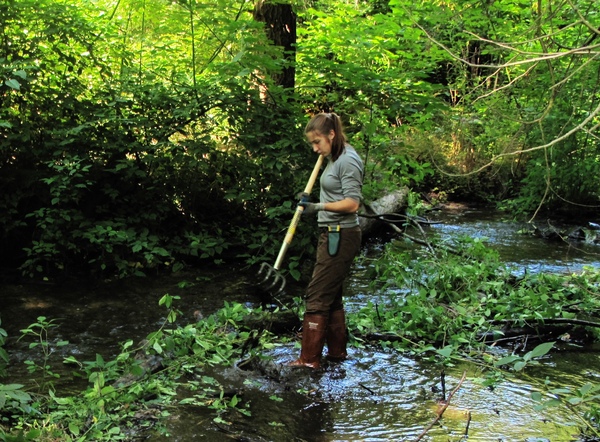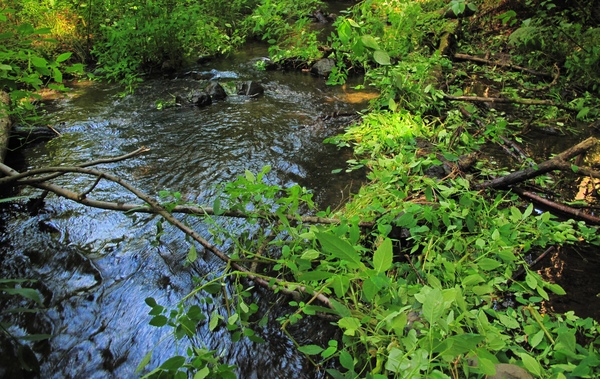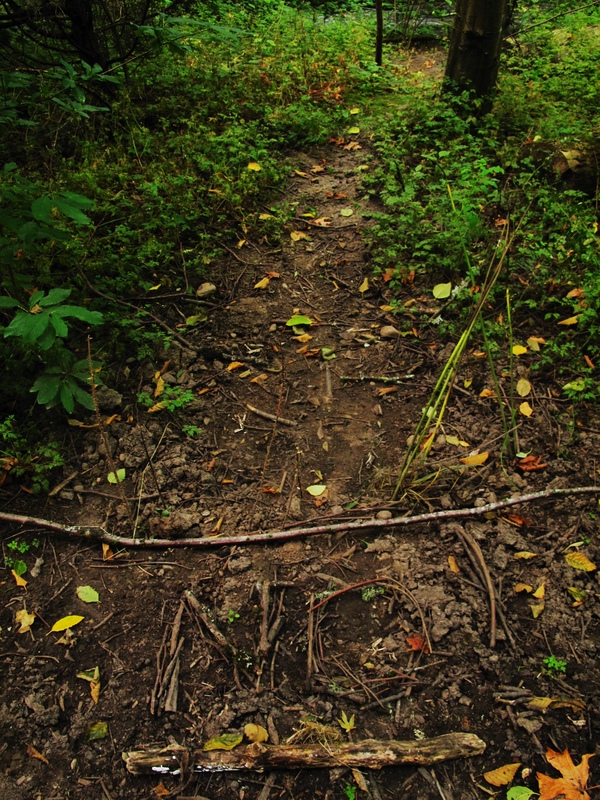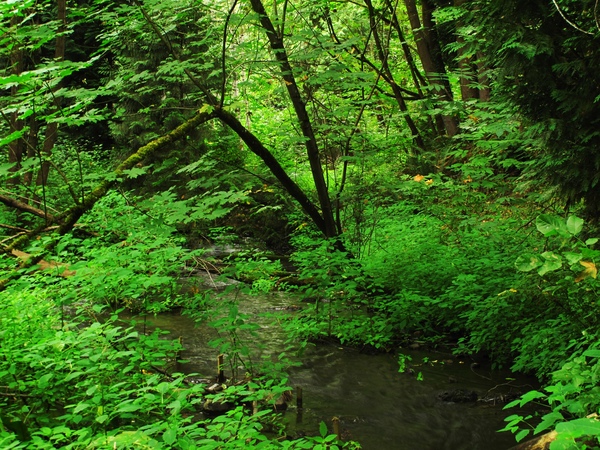Consider this scene:
The first thought that most people have upon coming to such a place is probably something along the lines of, How picturesque! I’d best plop down at this here picnic table and admire this splendid vista, this tranquil scene!
A salmon attempting to swim upstream, however, is probably thinking more along the lines of, Ohgodohgodohgod am I going to make it?
That salmon probably won’t, in fact, make it. Humans and fish have very different desires when it comes to getting the most out of a stream, be it for breeding purposes or otherwise. Salmon, for instance, need at least a consistent six inches of depth, the occasional deep pool to rest in, enough riffles to keep the water well aerated, a gradual change in elevation without dramatic waterfalls, and adequate cover from hungry raptors – and that’s not even getting into their particular breeding needs, which include but is not limited to gravel of JUST the right size and relatively undisturbed stream bottoms for their eggs to mature in. Applying this over the full course of the stream, as you might imagine, is actually a surprisingly complex bit of work.
Restoring Reed Canyon has largely been a story of restoring the stream, Crystal Springs Creek. For years, there wasn’t a stream at all for long sections of it, the water instead routed through a series of pipes in and out of a swimming pool – not exactly fish friendly. As a result, native species that used to frequent the stream, such as salmon and lampreys, ceased to be a part of the Reed Canyon ecosystem, contributing to the multitude of imbalances that plagued the place. Since then, the pool has been removed and a fish ladder put in its place, but generations of misuse of the Canyon had still caused a lot of critical erosion to the stream banks, making them – still – unnavigable to anything lacking feet.
One of Canyon Crew’s charges over the last few years has been to attempt to restore the stream banks to something closer to what a fish needs, while also respecting the human want to frolic at the water’s edge. We try to do a little work every year late in the summer and early fall to minimize our interference in natural cycles like the salmon run, and try not to stomp around in the stream during the rest of the year, minus the occasional spot of dam removal. We’re better off than where we were a few years ago – check out this picture of Crystal Springs Creek under the theater building – but there’s still a lot of work to do.
Making the stream narrower is the most common thing we do. Typically, we rake out gravels from the bottom of the desired path to deepen it, and shore up the new banks with them. We also add in sticks and logs from the surroundings, and will fill in any gaps with jewelweed – a fast-growing, water-loving native species that can actually root in these spaces and cement the new bank into place. We also bring in dogwood and willow cuttings to stabilize the stream bank in the long term. Some sculpting:
The stream also can’t be too fast – we don’t want a straight shot out of the Canyon, as no young juvenile salmon is going to be able to swim up a raging stream. We therefore sculpt the stream into mimicking natural meaders, which will hopefully deepen over time. To give the salmon a chance to rest, we also plop down the occasional big log, which forms deep pools of slow moving water.
This is what a section of the stream looks like after a few hours of shoring up the bank. While we didn’t block all of the water from traveling through on the right, we slow it down sufficiently that it should begin to deposit its sediment load, slowly filling up that section over time until only the stream on the left is still flowing. The crushed plants, primarily jewelweed, should grow up to form a lush, stabilizing hedge. We’d probably need to return to this site, and others, multiple times before the bank holds, but it’s a start.
In the long term, the stream will be able to maintain itself, carving out its own meanders, native species propagating on their own along the banks, pools naturally clearing themselves out of debris. However, in the meantime, the stream just needs a little bit of help to get back in business. We can already see the fruits of our labor in sightings like this in Reed Lake:
How can you help? Well, don’t go fishing, don’t indulge your inner engineer and build dams on the stream, and don’t go stomping about in the gravel beds lest you squish yourself some caviar. Admire the stream from preordained paths – during the restoration process, every footfall on the bank matters.
We’ll leave you with some pretty pictures of the restored stream. See you next week, and enjoy the Canyon!
If you have any questions, comments or concerns, feel free to either leave a comment on this blog or on the Facebook page, or to contact Zac Perry.
